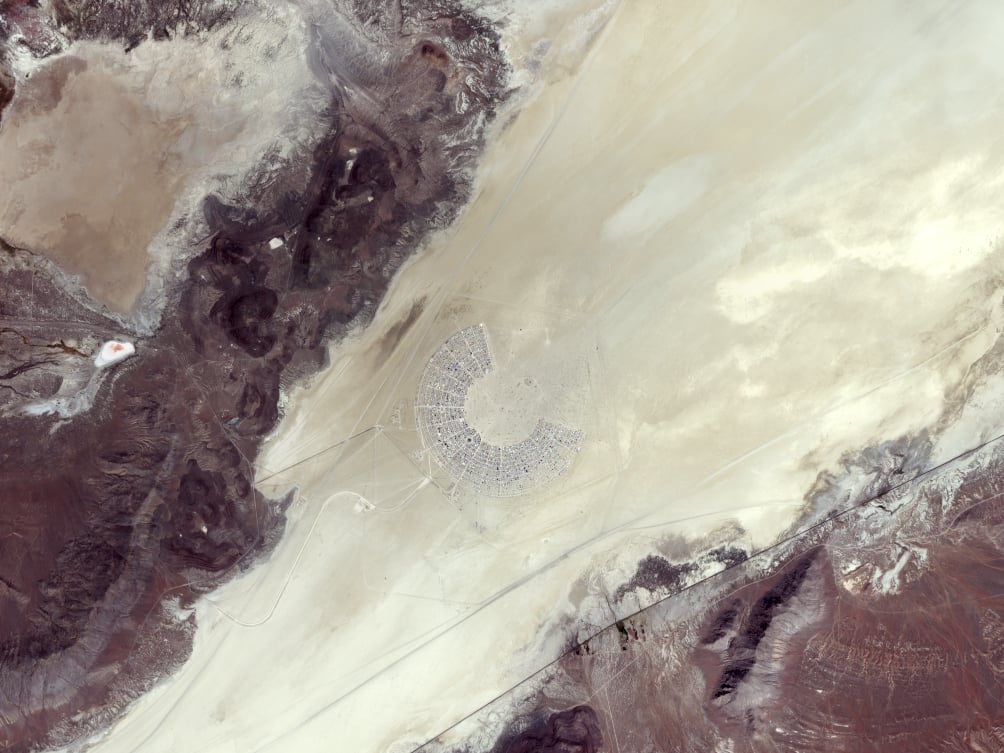
The European Space Agency has released a satellite image that shows exactly what Burning Man festival looks like from space.
Over 70,000 people gathered for the annual Burning Man festival at Black Rock desert in Nevada, U.S. from August 25 to September 2 this year.
Burning Man has become an iconic event in U.S. counterculture. However, it has been almost impossible to capture the vast scale and beauty of the festival, which takes place in a temporary city erected in the Black Rock Desert, in a single photograph.
But the European Space Agency’s Copernicus Sentinel-2 mission has now shared a satellite image of Burning Man from space — a photograph that reveals the grandeur and spectacle of the festival like never before.
ESA’s Copernicus Sentinel-2 mission is based on a constellation of two identical satellites flying in the same orbit, but 180° apart.
Between them, these satellites cover all of Earth’s land and coastal waters every five days.
This stunning photograph, taken from orbit on the second day of the event (August 26), shows the temporary desert community “Black Rock City” that gathers together for the week of the Burning Man event before disbanding for another year.
The photograph reveals the area of camper vans and tents grouped together for the art and self-expression festival, which involves music, art installations, experimental and interactive sculptures, and art cars, among others.
In the image, dark rocky landscapes frame the edges, while the bright white alkali flats stretch boldly across the scene. At the center, the semi-circular temporary settlement of Burning Man stands out against the backdrop.
“Stretching and uplifting of Earth’s crust over the past 17 million years have resulted in a recurrent pattern of valleys and rugged north-south mountain ranges, like those visible in brown around the sandy area,” the European Space Agency says in a statement published on September 20.
Burning Man festival’s name comes from its culminating ceremony, featuring the symbolic burning of a large wooden effigy, referred to as the Man, located at the dead center of this temporary settlement.
Image credits: All photos by European Space Agency.
